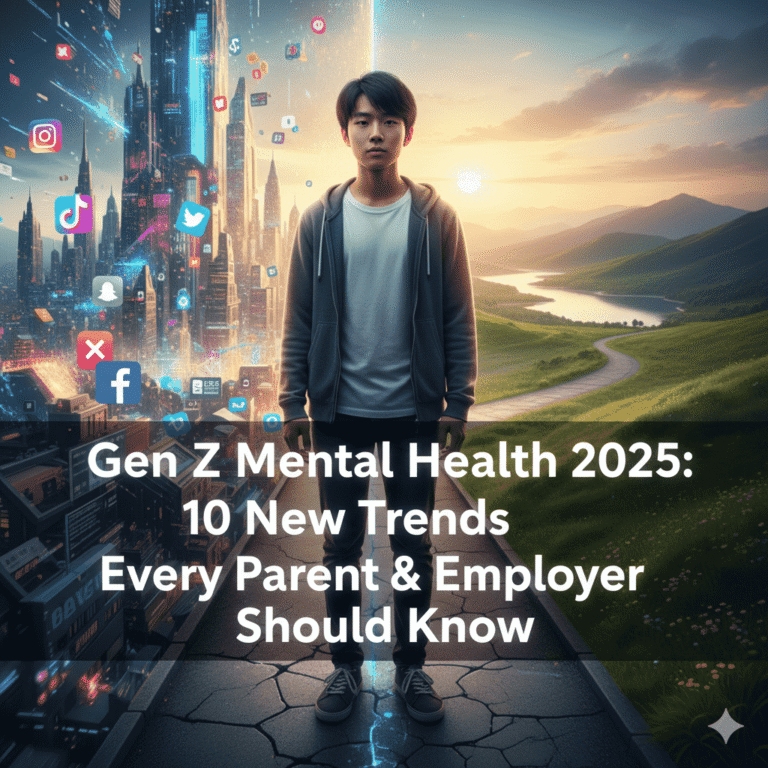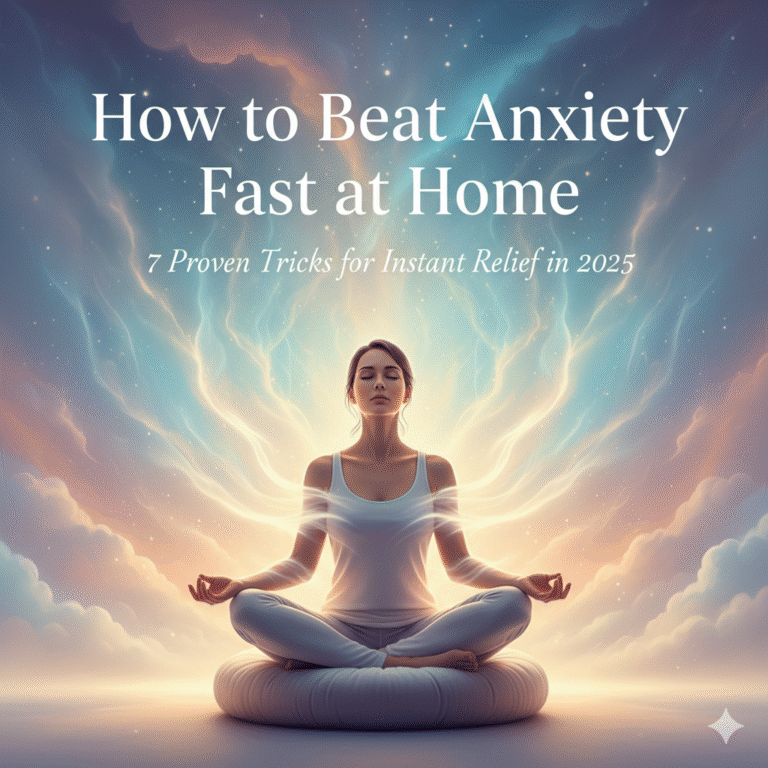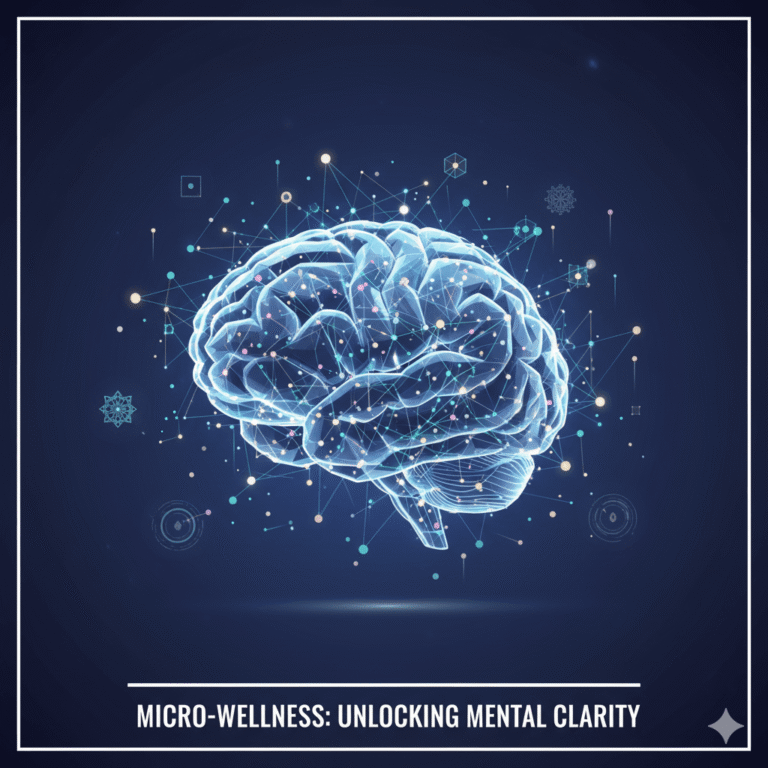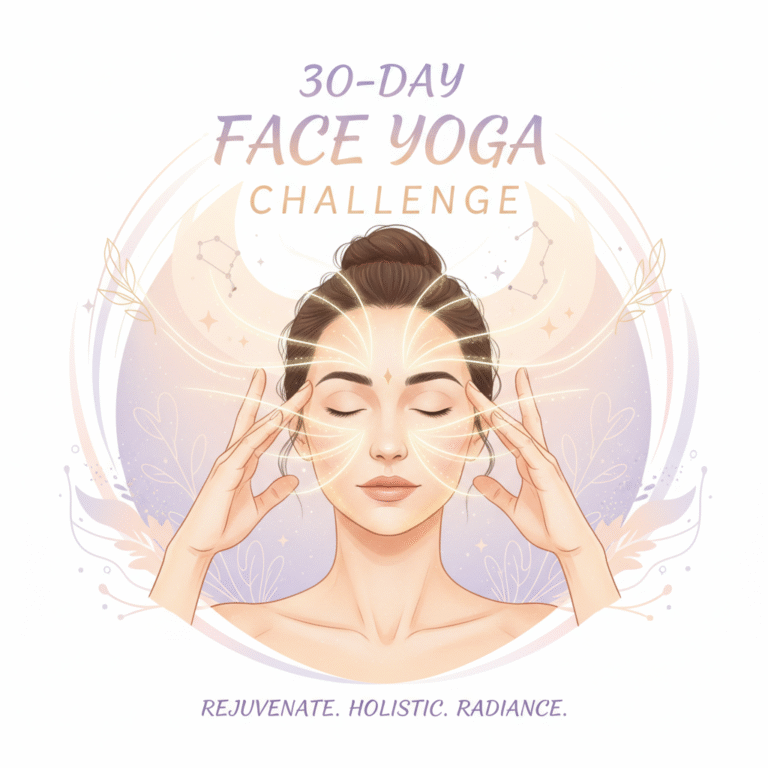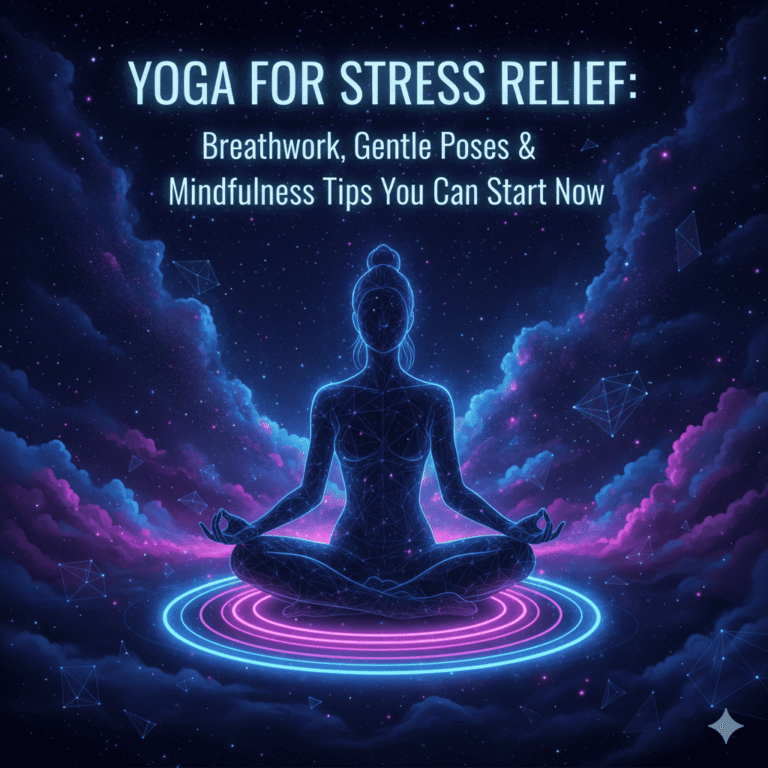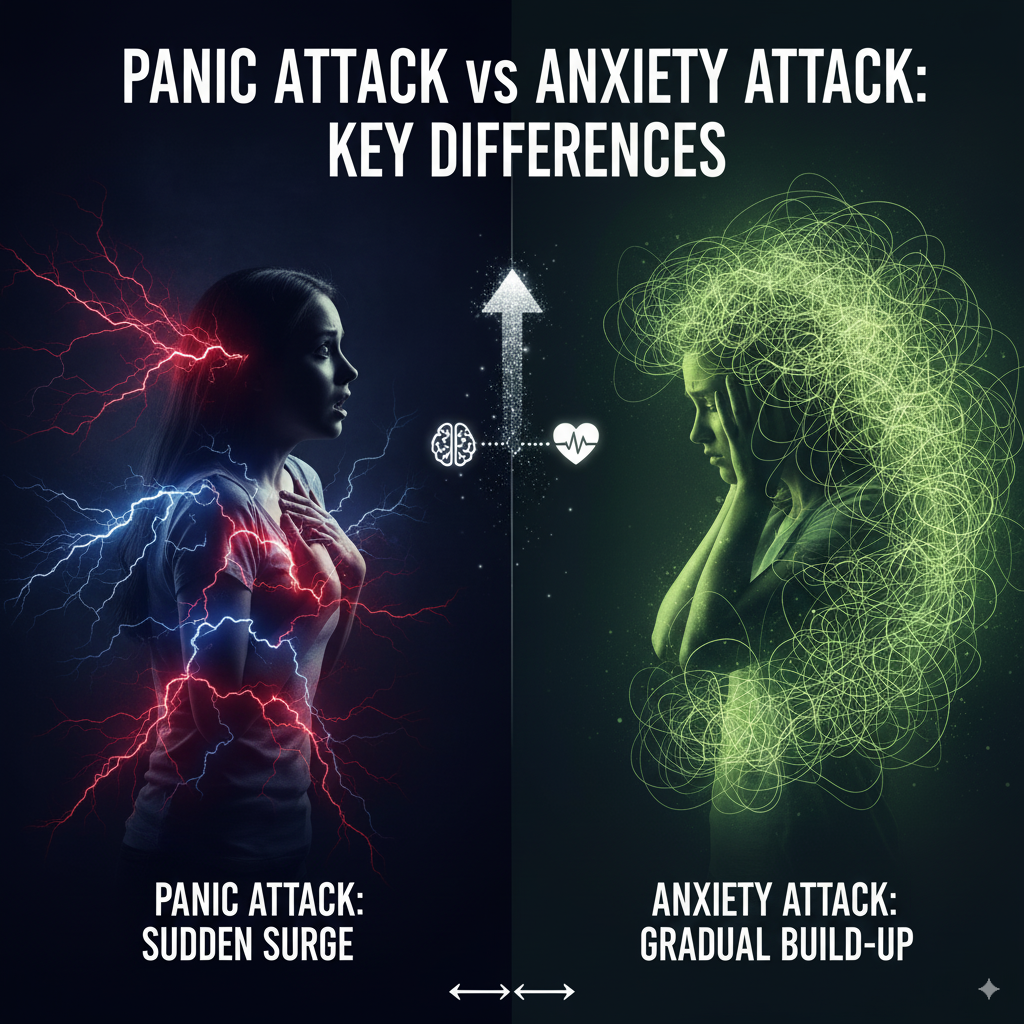
A Panic Attack vs Anxiety Attack: Key Differences
A panic attack vs anxiety attack mainly differs in speed and intensity: panic surges suddenly and peaks within minutes with strong body sensations, while anxiety builds gradually and lasts longer with persistent worry. Both respond to the 5‑4‑3‑2‑1 grounding technique steps and box breathing 4‑4‑4‑4 method, and professional help is wise for severe, new, or recurring symptoms.
What is a Panic Attack?
A panic attack is a rapid spike of intense fear or discomfort that peaks within minutes, with chest tightness, shortness of breath, racing heart, shaking, dizziness, chills or heat, tingling, nausea, and fear of dying or losing control. Episodes feel alarming but are typically brief and self-limited.
What is an Anxiety Attack?
“Anxiety attack” is a common term for heightened anxiety tied to stressors, with persistent worry, muscle tension, restlessness, stomach discomfort, poor focus, irritability, and sleep problems that build gradually and can last hours or days. It is not a formal diagnosis.
Panic vs Anxiety: Key Differences
| Factor | Panic Attack | Anxiety Attack |
|---|---|---|
| Onset | Sudden | Gradual |
| Trigger | Sometimes none | Usually clear stressor |
| Peak/Duration | Minutes with fast peak | Hours/Days fluctuating |
| Thoughts | Catastrophic | “What-if” loops |
| After-effects | Fatigue/anticipatory fear | Avoidance/sleep issues |
Symptoms You Might Notice
Racing heart, sweating, trembling, dizziness, nausea, chills or heat, tingling, chest sensations, breath changes, mental fog, and irritability can appear in both patterns.
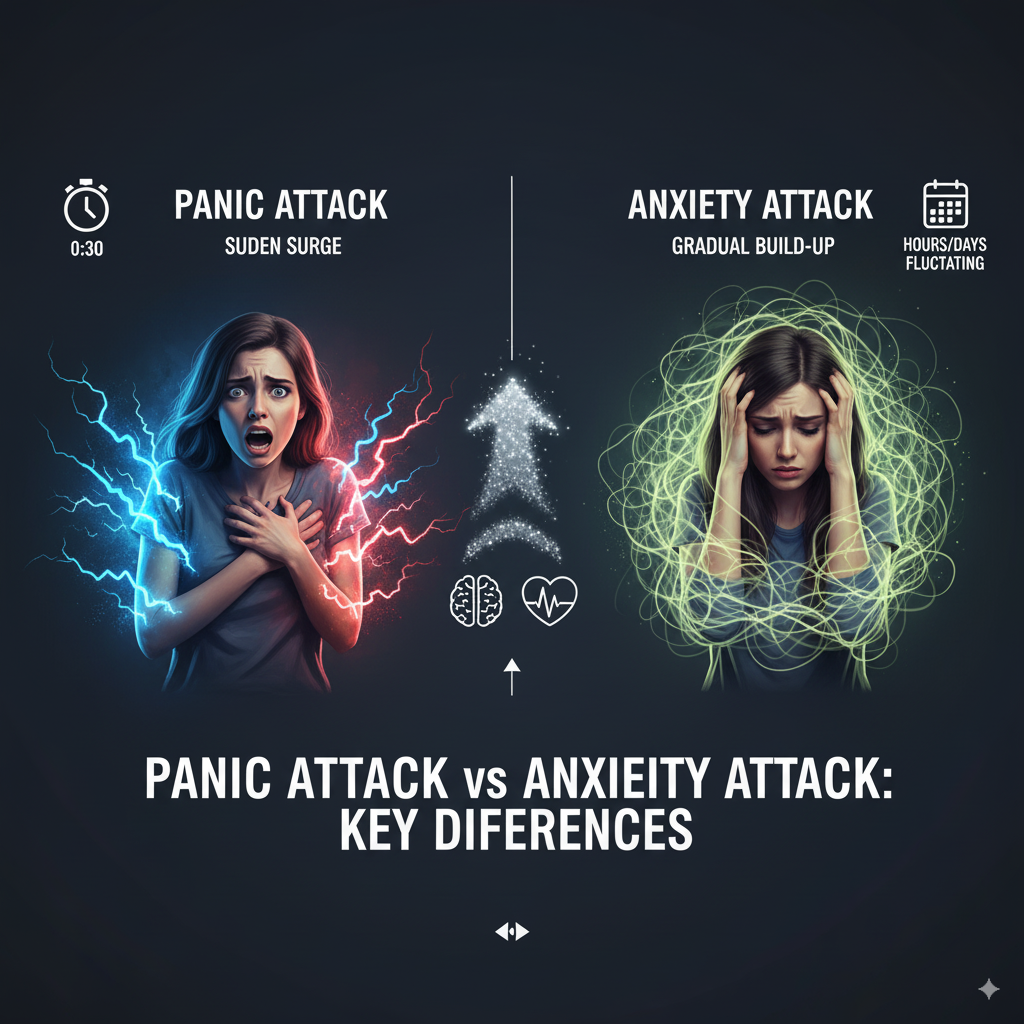
More Typical in Panic
- Sudden wave of terror, “I’m dying/losing control”
- Breathlessness or choking sensation
- Chest tightness
- Derealization/depersonalization
More Typical in Anxiety
- Persistent “what-if” thoughts
- Muscle tension
- Headaches
- Stomach discomfort
- Restlessness
- Sleep disturbance
How Long Do They Last?
Panic Attacks:
Panic attacks usually crest within about 10 minutes and settle within 20–30 minutes, answering “how long do panic attacks last” with brief after-effects like fatigue.
Anxiety Duration Explained:
Anxiety flares can persist for hours or days when the stressor remains, clarifying “how long does an anxiety attack last.”
What to Do Right Now (60–90 Seconds)
- Label: “This is a surge; it will pass,” making the difference between panic attack and anxiety attack actionable in the moment.
- Grounding: Do the 5‑4‑3‑2‑1 technique steps: 5 see, 4 feel, 3 hear, 2 smell, 1 taste—describe details slowly.
- Breathing: Use the box breathing 4‑4‑4‑4 method: 4 in, 4 hold, 4 out, 4 hold for 4 cycles; then 4‑in/6–8‑out.
- Reset Posture: Unclench jaw, drop shoulders, open hands, plant feet.
- Re-orient: Name date/time/place and three neutral objects nearby.
How to Stop a Panic Attack Fast
- Use paced exhale breathing (4 in, 6–8 out) for 1–2 minutes
- A cool splash or chilled bottle on face/neck for 20–30 seconds
- Ten counted steps synced to breath
- Safe-scene imagery for 60–90 seconds to break the fear-adrenaline loop
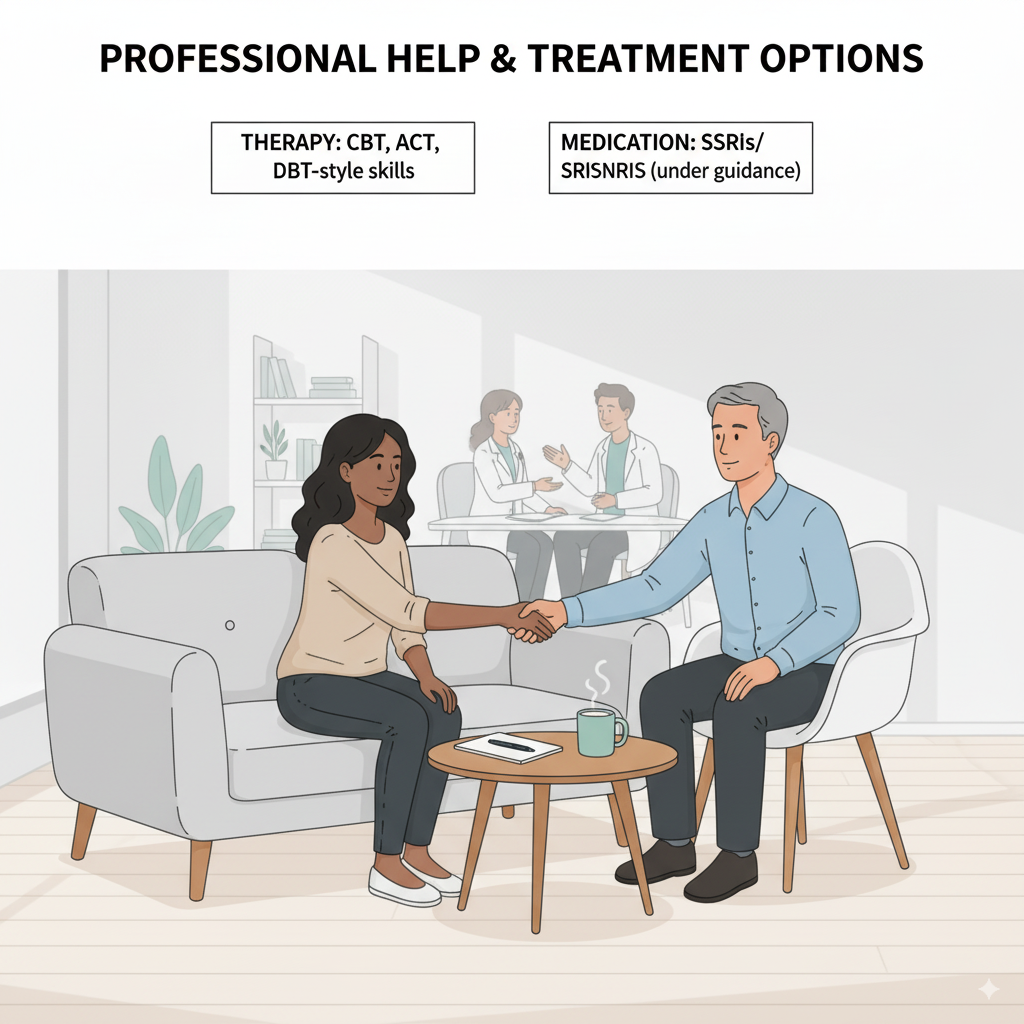
Calm Down During Anxiety Attack
- Apply cognitive defusion (“I’m having the thought that…”)
- Schedule a 10-minute worry window to contain rumination
- Do micro-exposure (a five-minute slice of an avoided task) to rebuild control
Caffeine, Sleep, and Everyday Triggers
“Can caffeine trigger panic attacks?” In sensitive individuals, stimulants can mimic panic sensations. Reduce the dose, pair with food, avoid energy drinks, and time caffeine earlier.
A wind-down routine—dim lights, less screen time, light stretching, and a minute of paced breathing—improves sleep and lowers next-day reactivity.
Panic Attack vs Heart Attack Differences
Panic chest discomfort often fluctuates and eases with calming. Heart warning signs include exertion-linked pressure, persistent pain, nausea/sweating, or radiating pain—when unsure, seek urgent evaluation immediately.
When to See a Doctor
Urgent: New/severe chest pain, fainting, confusion, slurred speech, stroke-like symptoms, or breathlessness that doesn’t settle—treat as emergency.
Soon: Frequent episodes, intensifying patterns, avoidance, or life impairment—aligns with “when to see a doctor for panic attacks,” so a stepped care plan can begin early.
Treatments That Work (Evidence-Based)
- CBT: Uses reappraisal plus interoceptive/situational exposure
- ACT: Builds willingness for sensations while taking values-based action
- DBT-style skills: Add emotion regulation for high arousal
- Medications: SSRIs/SNRIs can help under clinician guidance—never start/stop without advice.
24-Hour Reset Plan (Practical)
Morning:
- 4-in/6-out breathing for one minute
- Short walk or mobility
- Protein breakfast
- Delay or halve caffeine if sensitive
Midday:
- One grounding cycle and one micro-exposure to chip away at avoidance
Evening:
- Screens-down buffer
- Warm shower
- Brief guided relaxation
- A short tomorrow plan to reduce rumination
Panic Disorder vs Occasional Panic Attacks
Occasional panic during tough periods may not recur once stress eases and skills are learned. Panic disorder involves recurrent, unexpected attacks plus fear and avoidance that improve with therapy and steady practice.
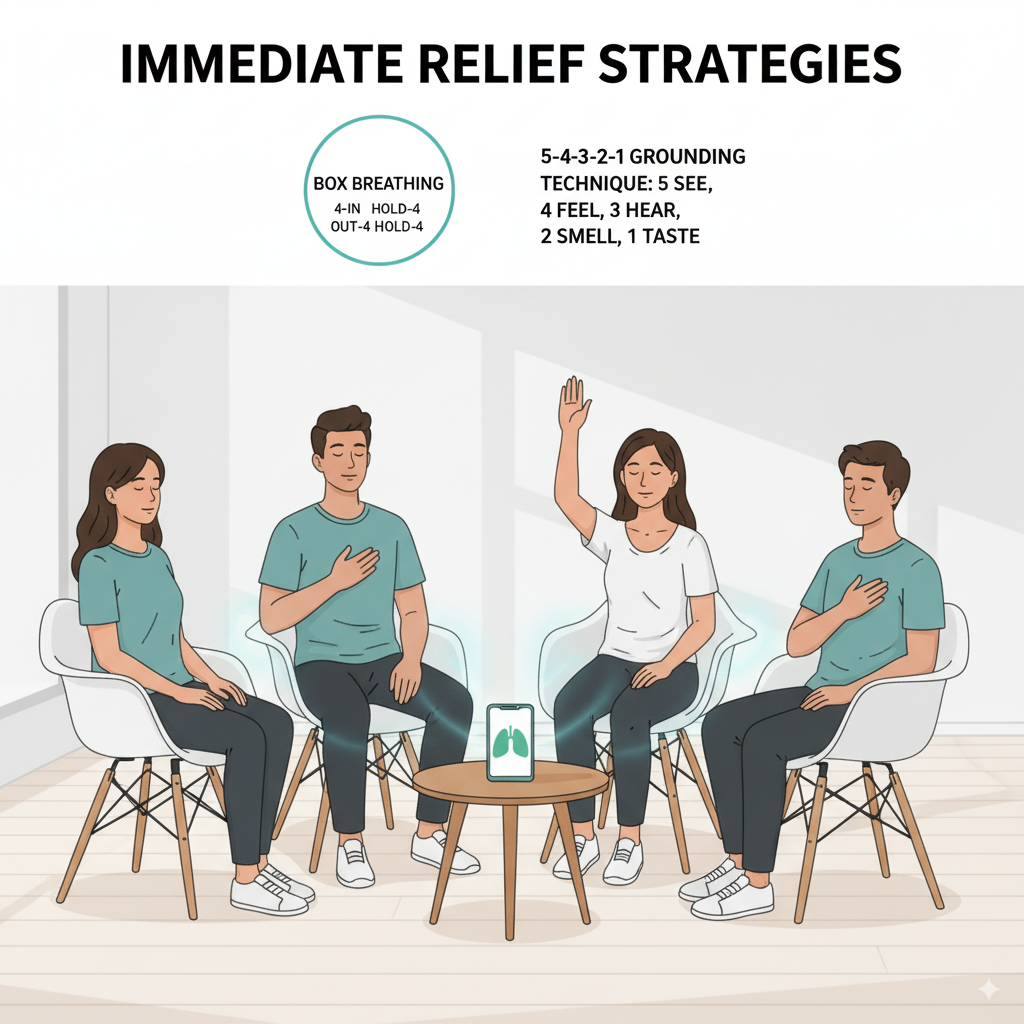
Conclusion
Most people can meaningfully reduce both panic spikes and sustained anxiety by pairing quick in-the-moment tools with steady habits. When needed, structured therapy helps. Knowing the difference between panic attack and anxiety attack removes confusion, and practicing the 5‑4‑3‑2‑1 grounding technique with the box breathing 4‑4‑4‑4 method builds real-world confidence. If episodes are frequent or life is shrinking due to avoidance, consider a professional plan. Early guidance shortens the path to relief.
Call to Action
Save this page, practice the 60–90 second plan twice daily when calm, and share with someone who might need it. For ongoing support, book a clinician consult or visit trusted national helpline resources.
How long do panic attacks usually last?
Most peak by about 10 minutes and settle within 20–30 minutes, though fatigue or shakiness can linger for a short while afterward.
How long can an anxiety attack last?
Hours or even days if the stressor remains; tools like grounding, paced breathing, and worry‑window scheduling shorten both length and impact.
What should be done during the first 60–90 seconds?
Label the surge, use the 5‑4‑3‑2‑1 grounding steps, try box breathing 4‑4‑4‑4 (then 4‑in/6–8‑out), relax posture, and re‑orient to date, time, and place.
Can caffeine trigger panic or anxiety?
Yes for some people; stimulants can mimic panic sensations (palpitations, jitters), so reduce dose, pair with food, avoid energy drinks, and time caffeine earlier.
How do I stop a panic attack fast in public?
Use long‑exhale breathing (4 in, 6–8 out), a brief cool splash on face/neck, 10 counted steps synced to breath, and a 60‑second safe‑scene visualization.
What daily routine reduces future attacks?
Brief morning breath work, movement “snacks,” steady meals, lighter caffeine, an evening wind‑down, and a short “plan for tomorrow” note to lower night rumination.

